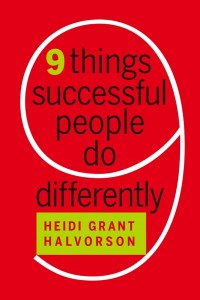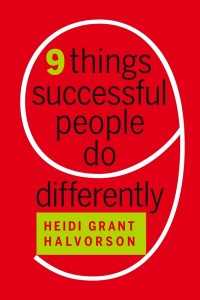Very few people can say that they are a truly great leader in every sense of the word. Chances are good that you are a terrific leader in some respects, and could use a little help in others, and you aren’t really sure why you can’t seem to master the whole package. The intuitive answer – that you are born blessed with certain leadership skills and talents, and born lacking in others – turns out to be, from a scientific standpoint, utterly wrong.
Decades of research on achievement paint a very clear picture: Successful people (including successful leaders) reach their goals not because of what they are, but because of what they do. You can learn to give feedback that motivates, create work environments that bring out the best in your team, and more effectively reach your own goals while teaching your employees how to reach theirs – but only if you have the right information to help you get the job done. Here are nine simple and scientifically-proven strategies you can use improve your game.
#1 Successful Leaders Get Specific. Very Specific.
Whether you are setting yourself a goal, or assigning a goal to a member of your team, try to be as specific as possible. “Increase sales by 10% in 2012” is a better goal than “increase sales,” because it gives you a clear idea of what success looks like. Knowing exactly what you want to achieve keeps you motivated until you get there.
Specificity is also important when it comes to giving feedback. Make sure you provide clarity not only about what needs improvement, but also what exactly can be done to improve. When you are a leader, helping your employee figure out how to do it right is just as important as letting them know what they are doing wrong.
#2 Successful Leaders Seize the Moment to Act on Their Goals. Given how busy most of us are, it’s not surprising that we routinely miss opportunities to act on our goals. Did you really have no time to check in with your team today? No chance at any point to return that email requesting guidance? Achieving your leadership goals means grabbing hold of these opportunities to be a great leader before they slip through your fingers.
To seize the moment, decide when and where you will take each action you want to take, in advance. Again, be as specific as possible (e.g., “If it’s Friday, then I will check in with each member of my team before lunch.”) Studies show that this kind of planning will help your brain to detect and seize the opportunity when it arises, increasing your chances of success by roughly 300%. Whenever possible, encourage your employees to use this same technique to execute their own projects as well.
#3 Successful Leaders Know Exactly How Far They Have Left To Go. Achieving any goal also requires honest and regular monitoring of your progress. You need it, and your team needs it. If you don’t know how well you are doing, you can’t adjust your behavior or your strategies accordingly. And research shows that we lose steam when we don’t have a clear sense of how far we are from the finish line. Check your progress (and theirs) frequently – weekly, or even daily, depending on the goal. Encourage the members of your team to monitor their own progress, too.
#4 Successful Leaders Are RealisticOptimists. When you are setting a goal for yourself or your team, by all means engage in lots of positive thinking and talking about how likely you are to achieve it. Believing in our ability to succeed is enormously helpful for creating and sustaining motivation. But whatever you do, don’t underestimate or play down how difficult it will be to reach the goal. Most goals worth achieving require time, planning, effort, and persistence. Studies show that thinking things will come easily and effortlessly leaves you and your employees ill-prepared for the journey ahead, and significantly increases the odds of failure.
#5 Successful Leaders Focus Their Team on Getting Better, Rather than Being Good. Believing you have the ability to reach your goals is important, but even more important is believing you can get the ability. Many people believe that their intelligence and other aptitudes (e.g., social skill, creativity) are fixed – that no matter what they do, they won’t really ever improve. As a result, they focus too much on proving themselves, rather than developing and acquiring new skills.
Fortunately, decades of research suggest that the belief in fixed ability is completely wrong – abilities of all kinds are profoundly malleable. Encourage your employees to see that they can change, and that it takes effort and experience to reach your fullest potential. (This means allowing them to make mistakes when trying something new or particularly difficult. Improvement takes time.) People whose goals are about getting better, rather than being good, take difficulty in stride, enjoy their work more, and turn in the most impressive performances.
#6 Successful Leaders Have Built Their Willpower Muscle
As you’ve probably already noticed, successful leaders need a lot of self-control. (Incidentally, research shows that employees are also more likely to trust a leader who seems to have a lot of self-control.) Your self-control “muscle” is just like the other muscles in your body – when you give it regular workouts by putting it to good use, it will grow stronger and stronger.
To build willpower, take on a challenge that requires you to do something you’d honestly rather not do. Give up high-fat snacks, or stand up straight when you catch yourself slouching. As your strength grows, you can take on more challenges and step-up your self-control workout.
#7 Successful Leaders Don’t Tempt Fate
No matter how strong your willpower muscle becomes, it’s important to always respect the fact that it is limited, and if you over-tax it you will temporarily run out of steam. So don’t put yourself in harm’s way if you can help it. If, for instance, you are already exhausted from a long day of putting out fires, don’t respond to the irritating email from your most difficult employee – you will probably say things you will wish you hadn’t. Many people are overly-confident in their ability to resist temptation – like the temptation to call your employee an incompetent doofus – and as a result they put themselves in situations where temptations abound.
#8 Successful Leaders Focus on What They Will Do, Not What They Won’t Do
Do you want to improve your team’s communication, increase productivity, or put a lid on your bad temper? Then plan how you will replace bad habits with good ones, rather than focusing only on the bad habits themselves. If you want change the way you or your team does something, ask yourself, What will I (we) do instead?
For example, if you are trying to gain control of your temper, you might make a plan like “If I am starting to feel angry, then I will take three deep breaths to calm down.” Or if you want to improve communication, don’t just say “We can’t continue to keep key information to ourselves” – figure out exactly how you will all get the information where it needs to go. By coming up with replacement behaviors, bad habits get worn away over time until they disappear completely.
#9 Successful Leaders Have Grit
Grit is a passion for, and commitment to, long-term goals – something leaders certainly in abundance. Studies show that gritty people obtain more education in their lifetime, and earn higher college GPAs. Grit predicts which cadets will stick out their first grueling year at West Point. In fact, grit even predicts which round contestants will make it to at the Scripps National Spelling Bee.
The good news is, if you aren’t particularly gritty now, there is something you can do about it. People who lack grit, more often than not, believe that they just don’t have the innate abilities successful people have. If that describes your own thinking …. well, there’s no way to put this nicely: you are wrong. As I mentioned earlier, effort, planning, persistence, and good strategies are what it really takes to succeed. Embracing this knowledge will not only help you see yourself and your goals more accurately, but also do wonders for your grit.
This article appeared in the May edition of Leadership Excellence, and was adapted from The Nine Things Successful People Do Differently, HBR’s most-read blog post of all time.

